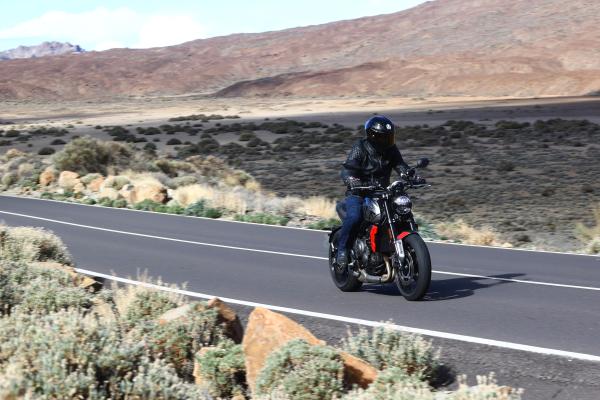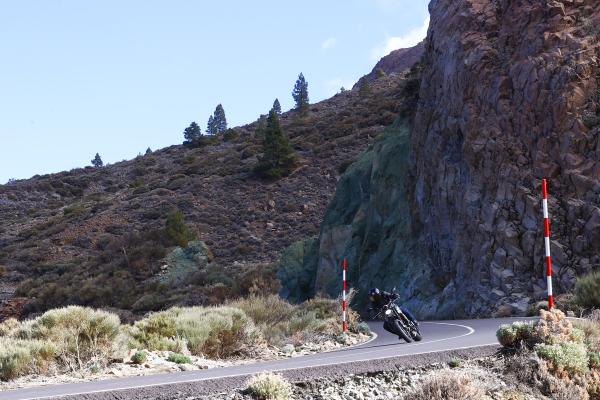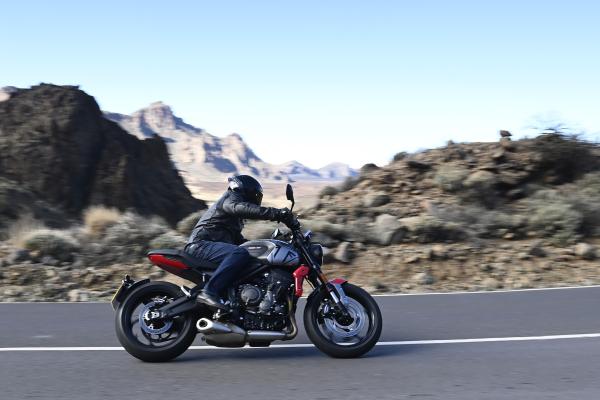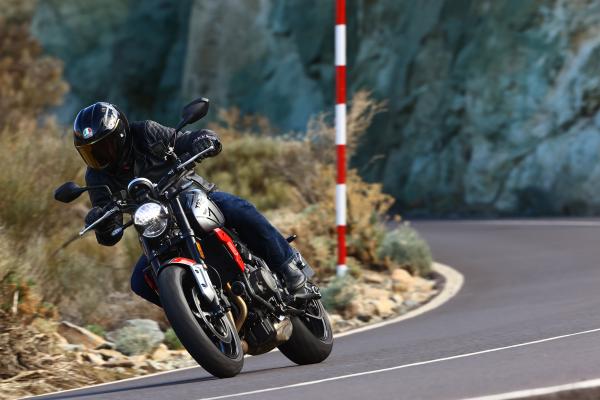Triumph Trident 660 Review - A quick and classy A2 middle-weight
Can the Triumph Trident 660 take the fight to the rest of the middle-weight crop? Find out here…

Member for
54 years 8 monthsWHEN motorcycle launch invites drop into your inbox there are few that raise your heart rate quite like a Triumph middle-weight naked bike event. And there is a good reason for that; few manufacturers can build a naked that ticks so many boxes as the team from Hinkley does. The Triumph Trident 660 is the firm's latest middle-weight machine.
For more than 25 years, Triumph has had the keys to a winning ethos that has helped to make bikes like the Speed Triple and Street Triple class-leading machines in the UK and abroad.
Triumph Trident 660 video review
The new Trident is looking to continue that trend, although with a slightly different owner in mind. The new machine is an ambitious attempt to pull in new riders to the brand, hopefully stealing sales from Yamaha and the MT-07, and Honda CB650R in the process.
To find out if the new bike is up for that challenge, we packed our panniers and made off for Tenerife to find out.
Triumph Trident 660 Price and rivals and colours
The bikes the new Triumph must do battle with are the Honda CB650R, £7,199, the Kawasaki Z650, £6,649, the Suzuki SV650, £5,649, and the Yamaha MT-07, £6,697, At £7,195, the new Trident resides near the top of the tree in terms of price, neck, and neck with the CB650R.
That said, the Triumph is a unique proposition in a market that is dominated by twin-cylinder machines. That exclusive three-cylinder engine and the delivery and sound that produces will be enough for some riders to opt of the new Trident over the competition.
The new 2021 Trident will be available in Silver Ice and Diablo Red, Matt Jet, and Matt Ice Silver, Crystal White, and Sapphire Black.
Engine
At the heart of the bike is a 660cc liquid-cooled, 12-valve inline three-cylinder that is taken from the previous Street Triple S model and heavily updated. With a claimed 80bhp on tap, the Trident is easily compatible with an A2 licence once the APS throttle has been fitted. As with any triple, the top end is one thing but the spread of easily accessed mid-range torque is what brings the grin to your face. On that front, the Triumph has 47lb-ft of torque, of which 90% of it is available from 3,600rpm right the way up to 9,750rpm.
Out on the stunning roads that run up Mount Teide, the delivery of the bike reminds me of the Street Triple R only slightly less frantic and much more easy-going. It might be the familiar rasp from the underslung exhaust that joins the dots up or it could just be the unmistakable DNA of the Street Triple shining through.
The torque the bike has allows you to be fairly lazy with gear selection, although as we travel higher and the air becomes thinner, more accurate shifting is definitely required. Thankfully, selecting the right cog for a given corner is easy as the six-speed slipper-clutch-equipped box on the new Trident is as slick and precise as you’d expect, with clutchless shifts up and down the ‘box helping to speed up our progress.
Chassis
The frame of the Trident is an all-new tubular steel affair, that bears no resemblance to any other model in the current Triumph range. It’s matched to a double-sided, pressed steel swingarm, again, of an all-new design. The suspension is taken care of by Showa with 41mm USD forks and a rear shock with pre-load adjustment only.
After riding the bike, I can hand on heart say that the handling of the machine is the most eye-opening factor. Triumph has taken a chassis and suspension set up that is, on the face of it, fairly basic and more budget than anything else in the range and they have tuned it and set it up perfectly for spirited B-road scratching.
Like with the engine of the bike, you can almost feel the DNA of the Street Triple in the chassis and suspension as you playfully toss the bike into faster corners. The handling dynamics are slightly slower than the Speed Triple, although no less easy to explore. It’s not the telepathic cornering technique required to make the bike turn, but for new riders and those moving up the ranks, an ideal set up to learn and enjoy on.
Another pleasant surprise with the bike is the braking system that has bite and feel that belies the fairly budget look of the set-up. The two-piston sliding Nissins calipers bite down onto 310mm floating discs and they look like they’re going to require a hefty pull of the leaver to call them into action. In truth, they really don’t, providing the rider with excellent lever feel and feedback in the process. The ABS on the bike is a two-channel system that is non-switchable, meaning there is no button or option to disable the safety net – a big burnout will do this for you though!
Comfort
The Trident is fitted with a large, plush, and extremely comfortable seat. It’s a single piece construction, with a generous section reserved for the pillion. The pegs are quite low-set and leave your legs in a comfortable slightly bent position. The upper-body rider triangle is just as neutral, with the bars arching back to meet you and leaving your arms free to focus on turning the bike.
Equipment
The Trident is something of a rarity in class, as only it and the Kawasaki Z650 feature snazzy TFT dash set-ups. The design of the Triumph’s system is really cool, with a two-part setup, a reverse LCD rev-counter and speed at the top, and a multifunction TFT below. The TFT element can display your gear, riding mode, fuel, trips, MPG, and Bluetooth functions – if you stump for the accessory Bluetooth module. Changing modes and selecting the info that’s shown in the TFT element is all done using the directional buttons on the left-hand switch-cube although I did find the interface a little fiddly – a ‘back’ button would help. The two riding modes cover Rain and Road mode, with each adjusting the bike’s throttle map and traction control settings.
The Trident also features an all-LED lighting set-up, that looks very cool out on the road. The rear light is neatly mounted into the underside of the seat unit which is joined by tidy-looking self-canceling LED indicators mounted on the number plate holder.
We like:
- Highly addictive handling characteristics
- Unmistakable triple delivery and soundtrack
- All-day comfort
We don’t like
- Fuel tank flanks look a tad plasticky
- Slightly fiddly user interface – would only frustrate to start with
Triumph Trident 660 verdict
Having ridden all of the bikes that fall into the sub-95bhp A2 licence segment, there seems to be a defining characteristic of all the bikes: easy handling that still has enough capability to excite. The new Trident has taken that theory and turned the volume up to eleven, chucking in a stunning exhaust note and inimitable triple delivery in the process.
Triumph has managed to take what is a fairly budget set of ingredients yet elevate them to a level that they really shouldn’t be at - Like a Michelin Star chef making beans on toast at the Ivy. It’s beans on toast, but you know it’s going to taste the mutt’s nuts when it arrives!
Is the Triumph Trident the best of the Middle-weight naked crop?
That is the £7,195 question, isn’t it? For me, the unique proposition of triple delivery and exhaust note just about pips it. If it was my money on the desk and had to make my way to a dealership to place a deposit today, it’d be a Triumph branded building I’d be heading towards.
I also think that the Trident would be the one bike of the bunch that you really wouldn’t get bored of for a very long time. It’s multifaceted enough to keep you smirking every time you open the garage for long after the PCP deal has been paid off!
Pictures: Chippy Wood, Gareth Harford
Video: Creative Kingdom
Triumph Trident 660 specs
ENGINE AND TRANSMISSION | |
Type | Liquid-cooled, 12 valve, DOHC, inline 3-cylinder |
Capacity | 660 cc |
Bore | 74.0 mm |
Stroke | 51.1 mm |
Compression | 11.1:1 |
Maximum Power | 81 PS / 80 bhp (60 kW) @ 10,250 rpm |
Maximum Torque | 64 Nm (47 lbft) @ 6,250 rpm |
Fuel System | Multipoint sequential electronic fuel injection with electronic throttle control |
Exhaust | Stainless steel 3 into 1 header system with low single sided stainless steel silencer |
Final Drive | X-ring chain |
Clutch | Wet, multi-plate, slip & assist |
Gearbox | 6 speed |
CHASSIS | |
Frame | Tubular steel perimeter frame |
Swingarm | Twin-sided, fabricated steel |
Front Wheel | Cast aluminium, 17 x 3.5 in |
Rear Wheel | Cast aluminium, 17 x 5.5 in |
Front Tyre | 120/70R17 |
Rear Tyre | 180/55R17 |
Front Suspension | Showa 41mm upside down separate function forks (SFF) |
Rear Suspension | Showa monoshock RSU, with preload adjustment |
Front Brakes | Nissin two-piston sliding calipers, twin 310mm floating discs, ABS |
Rear Brakes | Nissin single-piston sliding caliper, single 255mm disc, ABS |
Instruments | Multi-function instruments with colour TFT screen |
DIMENSIONS & WEIGHTS | |
Length | 2020 mm (79.5 in) |
Width (Handlebars) | 795 mm (31.3 in) |
Height Without Mirrors | 1089 mm (42.9 in) |
Seat Height | 805 mm (31.7 in) |
Wheelbase | 1401 mm (55.2 in) |
Rake | 24.6 ° |
Trail | 107.3 mm (4.22 in) |
Wet weight | 189 kg (417 lb) |
Fuel Tank Capacity | 14 litres (3.7 US gal) |
Its been a busy couple of years for Triumph, the British marque churning out a series of brand-new models from the Rocket 3 to the Street Triple RS to the Tiger 900, not to mention a wealth of facelifts and limited editions, in that time. And yet, it is this - the all-new Triumph Trident 660 - that ranks as probably the most important of the lot.
Indeed, while the mid-capacity naked class - dominated by the Yamaha MT-07, Kawasaki Z650 and Honda CB650R - doesn’t exactly scream passion, it is these good value, modest running cost, tidy handling motorcycles that rack up a not-to-be-ignored proportion of market share in Europe and beyond.
Enter stage right, the Triumph Trident 660 which arrives as the new entry point into Triumph roadster ownership starting at £7,195.
While the heavily modified 660cc triple-cylinder engine is a relic of the erstwhile Street Triple, everything else on the Trident 660 is brand-new. Even so, it retains some unmistakable Triumph styling from the synonymous circular headlamp front-end to the bulbous silhouette and slick detailing.
We’ve posted plenty of articles about the Trident since its unveiling last month but now comes the important bit… what is it like to ride?
We have come to Tenerife and ascended into the clouds surrounding Mount Teide to find out whether Triumph sweet sounding triple trouble is about to cause an eruption in the mid-capacity roadster segment.
Triumph Trident 660 2021 | First Impressions
Its been a busy couple of years for Triumph, the British marque churning out a series of brand-new models from the Rocket 3 to the Street Triple RS to the Tiger 900, not to mention a wealth of facelifts and limited editions, in that time. And yet, it is this - the all-new Triumph Trident 660 - that ranks as probably the most important of the lot.
Indeed, while the mid-capacity naked class - dominated by the Yamaha MT-07, Kawasaki Z650 and Honda CB650R - doesn’t exactly scream passion, it is these good value, modest running cost, tidy handling motorcycles that rack up a not-to-be-ignored proportion of market share in Europe and beyond.
Enter stage right, the Triumph Trident 660 which arrives as the new entry point into Triumph roadster ownership starting at £7,195.
While the heavily modified 660cc triple-cylinder engine is a relic of the erstwhile Street Triple, everything else on the Trident 660 is brand-new. Even so, it retains some unmistakable Triumph styling from the synonymous circular headlamp front-end to the bulbous silhouette and slick detailing.
We’ve posted plenty of articles about the Trident since its unveiling last month but now comes the important bit… what is it like to ride?
We have come to Tenerife and ascended into the clouds surrounding Mount Teide to find out whether Triumph sweet sounding triple trouble is about to cause an eruption in the mid-capacity roadster segment.
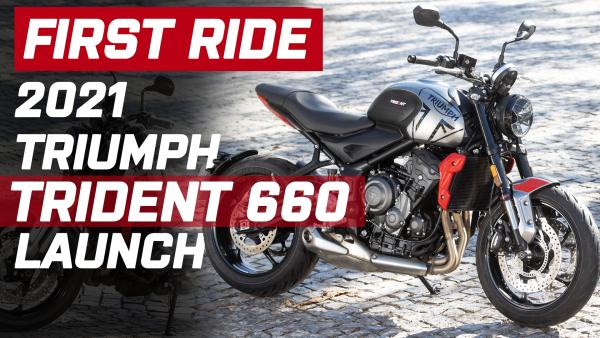
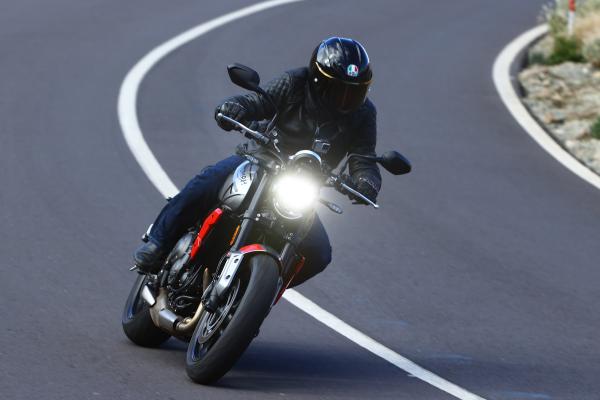

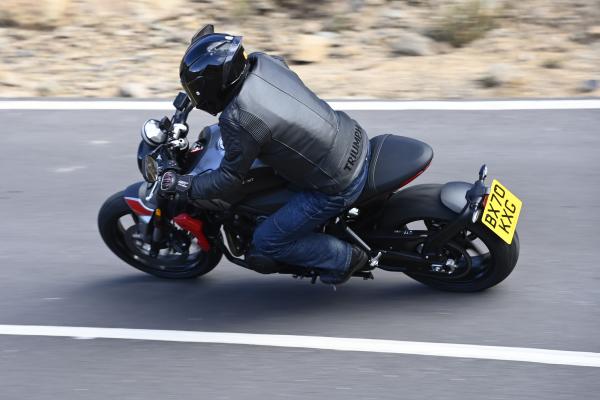
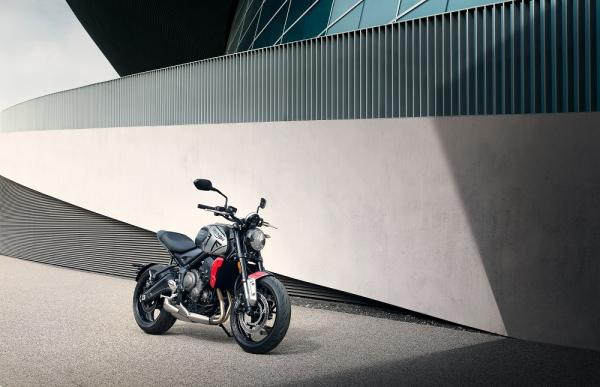
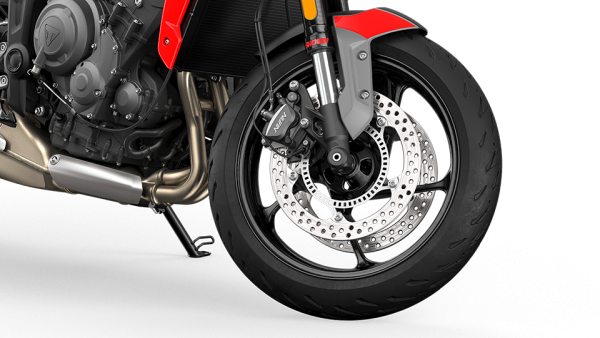

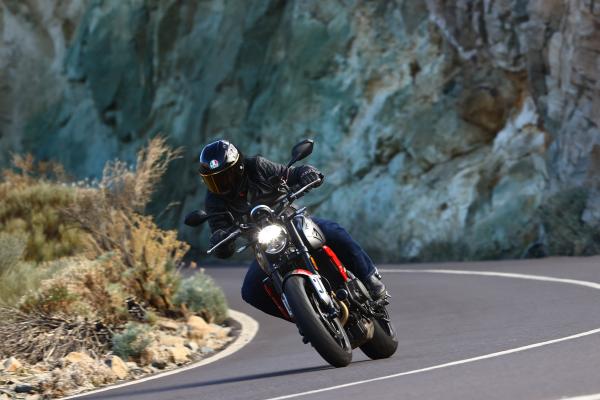
.jpg?itok=vzQNLOBm)
